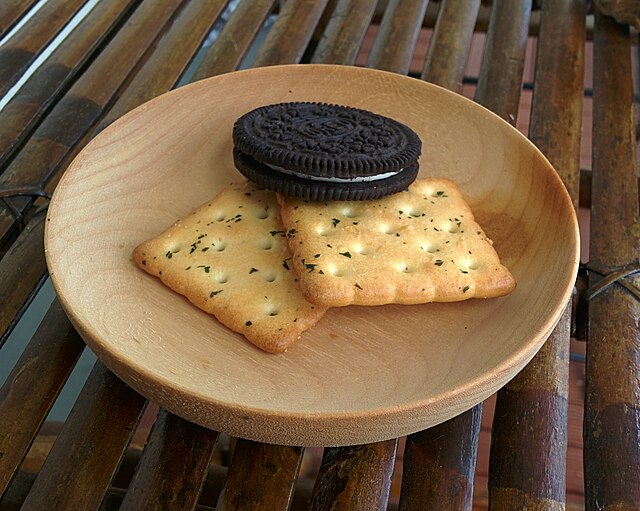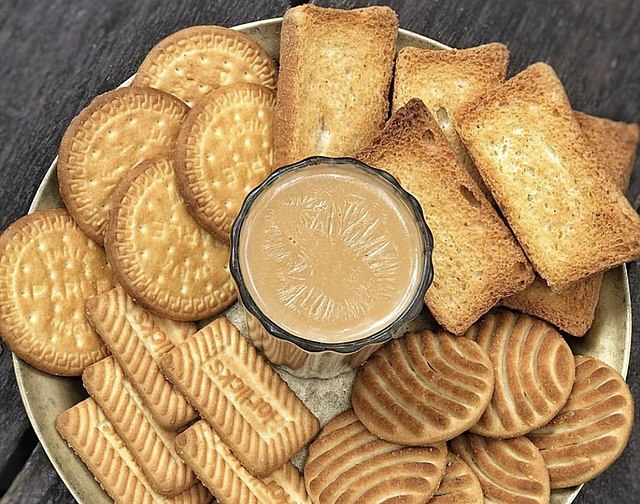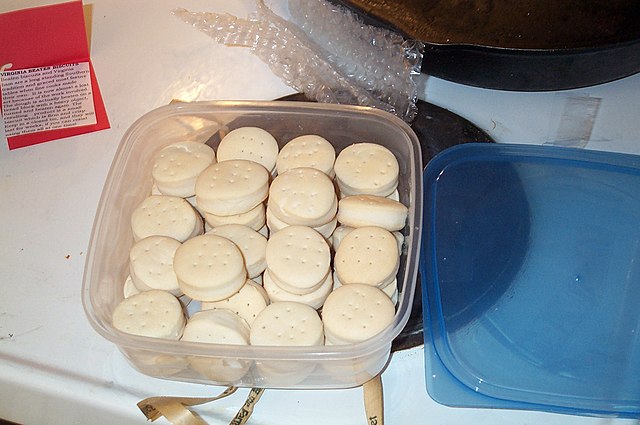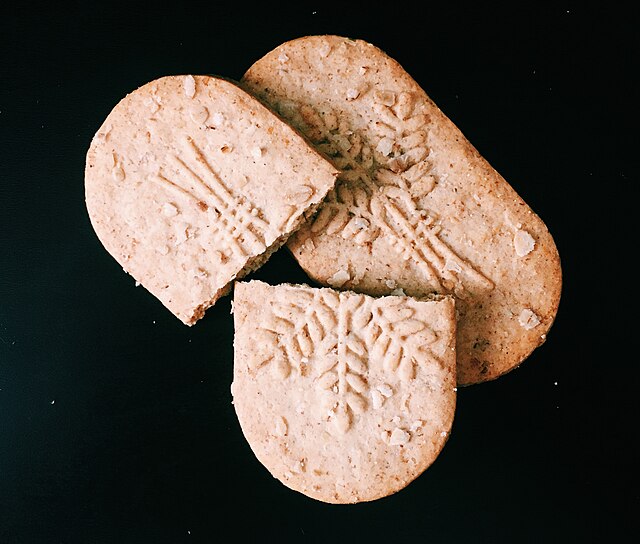A digestive biscuit, sometimes described as a sweet-meal biscuit, is a semi-sweet biscuit that originated in Scotland. The digestive was first developed in 1839 by two Scottish doctors to aid digestion. The term digestive is derived from the belief that they had antacid properties around the time the biscuit was first introduced due to the use of sodium bicarbonate as an ingredient. Historically, some producers used diastatic malt extract to "digest" some of the starch that existed in flour prior to baking.
Digestive biscuit
Early 20th century McVitie & Price's Digestive tin box, located in the Victoria and Albert Museum, London
Plain digestive biscuits with tea, jam and cakes on a serving tray.
The coated side of a McVitie's milk chocolate digestive biscuit
A biscuit, in most English speaking countries, is a flour-based baked and shaped food item. Biscuits are typically hard, flat, and unleavened. They are usually sweet and may be made with sugar, chocolate, icing, jam, ginger, or cinnamon. They can also be savoury, similar to crackers. Types of biscuit include sandwich biscuits, digestive biscuits, ginger biscuits, shortbread biscuits, chocolate chip cookies, chocolate-coated marshmallow treats, Anzac biscuits, biscotti, and speculaas.
An Oreo, a brand of sweet sandwich biscuit, and two crackers, a type of savoury biscuit
Biscuits of Ghana
Beaten biscuits (southern US)
Wheat and cream biscuits (northern England)








